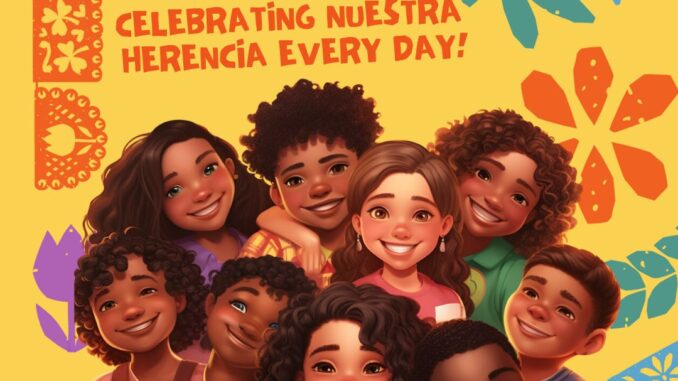
Soooo, historically… I have taken Latino Heritage Month off, because it seems like the whole world stands up and has a burst of pride during this time. I figured since I do this every other day, I would let them do the heavy lifting. I also recognize that parents take this moment, to present information to their children they might not otherwise think to. So starting this year, I will be producing and sharing content from other creators I love that parents can use to teach their children during Latino Heritage Month as well especially now that we are starting from scratch.
Let’s start with why we even have a Latino Heritage Month at all.
Latino Heritage Month, also known as National Hispanic Heritage Month, is observed from September 15 to October 15 in the United States. It is a time to celebrate the histories, cultures, and contributions of American citizens whose ancestors came from Spain, Mexico, the Caribbean, and Central and South America. The observation started in 1968 as Hispanic Heritage Week under President Lyndon B. Johnson and was expanded to a month-long celebration in 1988 by President Ronald Reagan.
September 15 holds significance as it is the anniversary of independence for several Latin American countries, including Costa Rica, El Salvador, Guatemala, Honduras, and Nicaragua. Additionally, Mexico and Chile celebrate their independence days on September 16 and September 18, respectively. Throughout the month, various events, educational activities, and celebrations take place across the country to honor the rich Latino heritage and its profound impact on American society.
The Evolution of Hispanic Identity: From “Latino” to “Latinx” and Beyond
The term “Hispanic” has its roots in the U.S. Census Bureau, which introduced it in the 1970s to categorize individuals from Spanish-speaking countries. Over time, as the community’s understanding of identity became more nuanced, terms like “Latino” and “Latina” emerged to represent people from Latin America, regardless of their language.
In the 21st century, with the rise of gender inclusivity, the term “Latinx” was coined to provide a gender-neutral alternative to “Latino” and “Latina.” This term has been embraced by many, especially within younger generations and LGBTQ+ communities, as it breaks away from the gender binary.
More recently, “Latiné” has been proposed as another gender-neutral term, drawing from the Spanish language’s structure and offering a phonetic alternative to “Latinx.”
Furthermore, the term “Afro-Latino” has gained prominence to recognize individuals of African descent within the Latino community, highlighting the rich diversity and intersectionality of identities in the Americas.
These evolving terms reflect a broader movement towards recognizing the complexity and fluidity of identity within the Hispanic and Latino communities, emphasizing the importance of self-identification and inclusivity.
We support all these designations and honor all of our influences… including the Indigenous, African and Spaniard.
George Torres
